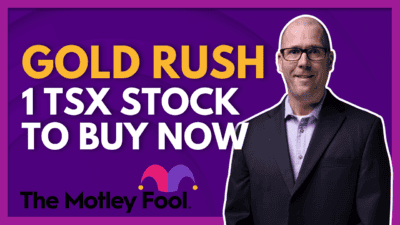It has been a tough time for investors in mid-cap gold miner Kinross Gold Corp. (TSX: K)(NYSE: KGC). While the price of gold has only dropped a modest 2% over the last year and the NYSE Gold Bugs ARCA Index (NYSE: HUI) — a modified equal dollar-weighted index of 18 gold miners — has dropped 14%, Kinross’ share price has plunged a massive 34%.
This can be attributed in part to gold miners being a leveraged play in gold prices, but the key drivers were growing market concern over its cost structure and operations. There are now signs that Kinross represents tremendous value for investors and this has captured the attention of Wall Street with hedge fund manager Donald Smith recently betting US$17 million on the company bouncing back.
But this leaves the question for investors, if Wall Street is investing should I follow suit? Let’s take a closer look at Kinross to see whether it is worthy of the attention it is garnering.
Operating costs continue to fall
After identifying a number of issues which have impacted on Kinross’ performance management initiated a turnaround program, a key plank of which is to reduce operating costs so as to boost margins and profitability. This initiative has made some significant progress, with third-quarter 2014 all-in sustaining costs falling 6% quarter-over-quarter and 26% year-over-year to $919 per ounce. Based on the current gold price of $1,198 per ounce this gives Kinross a margin of $279 per ounce sold.
More impressively these costs are at the lower end for the industry and superior to many of Kinross’ peers for the same period, with Goldcorp Inc. reporting all-in sustaining costs of $1,066 per ounce and Agnico Eagle Mines Ltd. (TSX: AEM)(NYSE: AEM) reporting $1,059 per ounce.
This is an impressive achievement for gold miner which previously had been battling to get costs under $1,000 per ounce. As a result Kinross was able to revise its 2014 outlook for costs downward, with all-in sustaining costs now expected to be $990 per ounce for the full year, 6% lower than originally forecast. This certainly bodes well for Kinross’ profitability and should see a nice bump in earnings and its bottom line for the full year despite softer gold prices.
Gold production continues to grow
Another pleasing aspect of Kinross’ operational performance has been its ability to steadily grow gold production which for the third quarter 2014 spiked 2% quarter-over-quarter and year-over-year to 693,818 ounces. This allows Kinross to boost revenues and cash flow despite softer gold prices and when coupled with the significant improvement in costs augurs well for its profitability.
Kinross is now attractively priced
Due to the significant sell-off of its stock over the last year, Kinross is now trading with some very attractive valuation multiples. This can be seen with two key multiples that are used to value gold miners and compare them to their peers, enterprise value to EBITDA and EV as a ratio of gold reserves.
Kinross is currently trading with an EV of 4 times EBITDA and equal to $114 per ounce of gold reserves. This makes it appear better value than Goldcorp, which has an EV of 6 times EBITDA and equal to $367 per ounce of gold reserves. It is also far cheaper than Agnico Eagle, which has an EV of a massive 10 times EBITDA and equal to $381 per ounce of gold reserves. Clearly illustrating how significantly the market has undervalued Kinross.
But should investors take the plunge and buy Kinross?
There are signs of an imminent rebound in the gold price and when coupled with gold being one of the best ways to hedge against an increasingly unstable global environment, investing in Kinross does make sense, particularly when the big bet taken by Wall Street and its attractive valuation multiples are considered. These indicate Kinross offers considerable potential upside, but it is not an investment where I would “bet the farm”.






